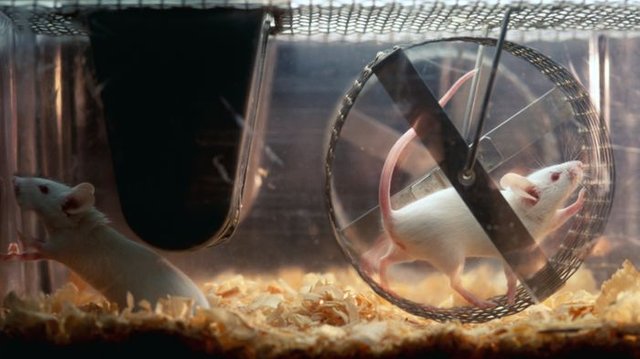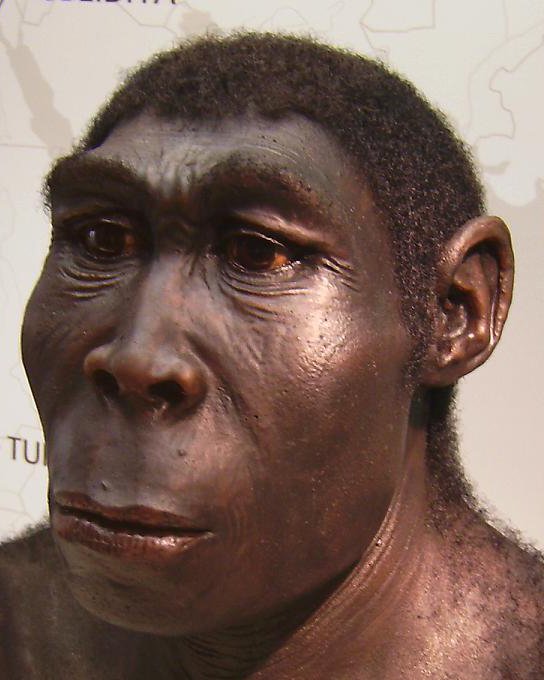2 to 3 million years ago, our ancestors became long distance runners...sorta

img src: THE PINAY SUNSET RUNNER
Among certain circles, there has been a belief human beings came out on top in the ecology as the top predators because we had a rather unique ability: we are one of the best long distance runners on the planets. We are not the fastest. We are not the most agile. However, over very long distances, people can keep running - at least those in good shape - distances that would kill most other animals. This includes horses, by the way. The concept was people became long distance runners to run down their prey when they hunted. They might stab or wound their prey and then keep chasing it until it dropped from exhaustion. Or, some suggested, it might be before we even had stone tools and could chase down prey without doing anything more than running. Chase the antelope steadily, relentlessly, constantly until it dropped dead.
While it is true we are better endurance runners than almost any mammal out there, this was viewed as something of a 'just so' story. Since it was so embraced by the marathon runner community, it was viewed with some strong skepticism by scientists in many ways: it sounded like a story to justify their hobby. Outside runner circles, the only place I'd heard this, personally, was in a science fiction novel by David Brin in The Uplift War. Science fiction, while a fun read, doesn't have a great track record on biology, to be kind. However, a new paper might actually be in support of the hypothesis.
One of the ways geneticists study what a gene does is to engineer another animal with the same (or very similar) gene people have. By doing so, they can see how the gene effects the body of an animal and then be able to get a better idea of how that gene affects people. Mice are a favorite animal for this because they breed fast and special breeds of mice have been created to more easily genetically modify them.

img src: Nature
Scientists at University of California's San Diego School of Medicine conducted a genetic study to find out what a gene that in humans was deactivated did. There are a lot of genes in the human genome that seem to be deactivated or 'dead.' Some of these genes are dead for a long time and do not code for a protein at all anymore: these are gene fossils are called 'pseudogenes.' The media often likes to call them 'zombie genes,' though that is far from accurate. The gene UCSD's School of Medicine researchers wanted to look at was one called 'Cmah.' It is inactive in people, but active in other animals. Using genetic engineering, the scientists turned off the gene in mice to see what would happen.
As it happened, the mice became better able to exercise for far longer than their unmodified mouse counterparts. In one study of the modified mice, the researchers found the mice could last 30% longer on the treadmill before fatigue set in compared to the unmodified mice. In another study, the mice lasted 20% longer and could run 12% faster than normal mice. When the researchers looked into the muscles of the mice, they found greater levels of oxygen than normal mice and more amino acids than the norm as well. Both of these contribute to having better performance and endurance in during running.
In studying the gene, researchers believe it appears to have spread among the ancestors of modern people between two to three million years ago. This is interesting insomuch as this was timing for when humanity's ancestors were becoming more and more active on the savannah, leaving the forest. While the transition did not cause the gene to become inactive, the individual or individuals who had the original mutation were at an advantage over their relatives who did not. They could acquire more food, outrun more predators, and potentially even do as the marathon runners today believe: chase down prey to hunt it.
img src: Westfälisches Landesmuseum via wikipedia, reconstruction by W. Schnaubelt & N. Kieser (Atelier WILD LIFE ART)
It is conceivable with this study the genus Homo became so successful because the gene Cmah was deactivated. Rather than another type of primate wandering around, much like, say baboons, hominins were now able to hunt and spread far wider than could have been otherwise. There may be some issues with this - all science needs to be double checked! Especially with the timing of when genes are acquired! - but this looks very solid and seems to have given us a better understanding of how our ancestors became who were are today.
Human-like Cmah inactivation in mice increases running endurance and decreases muscle fatigability: implications for human evolution
http://rspb.royalsocietypublishing.org/content/285/1886/20181656
A single gene mutation may have helped humans become optimal long-distance runners
https://www.eurekalert.org/pub_releases/2018-09/uoc--asg090518.php
Gene Mutation Made Our Ancestors Better Long Distance Runners
http://blogs.discovermagazine.com/d-brief/2018/09/11/gene-mutation-helped-our-ancestors-run-faster-longer/#.W5hjLJNKjBI
Pseudogene
https://en.wikipedia.org/wiki/Pseudogene

😎😎😎
Posted using Partiko Android